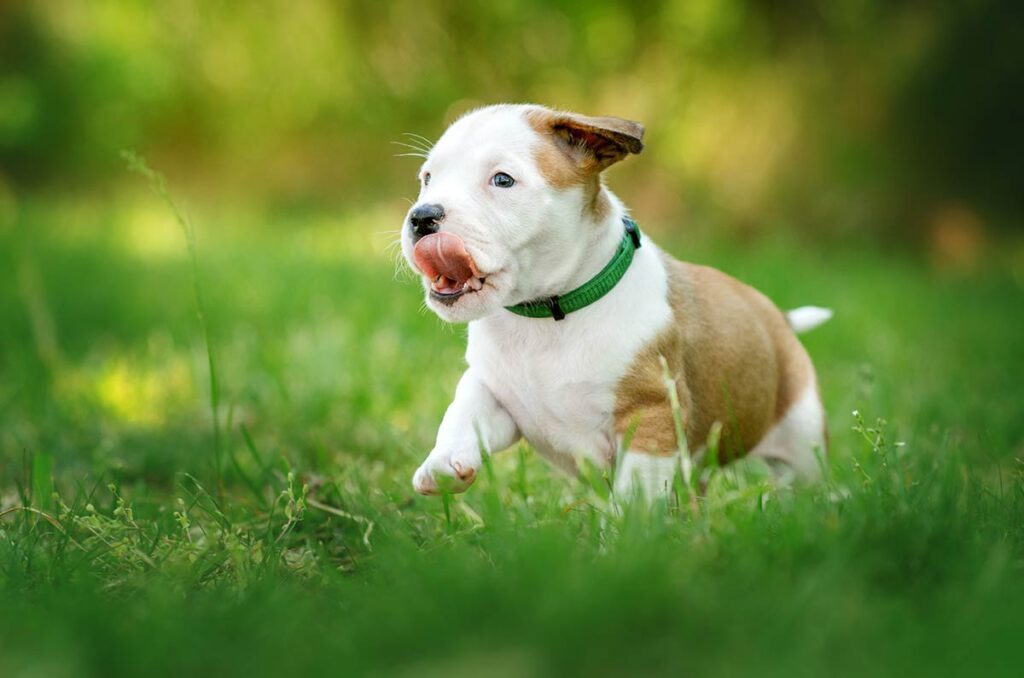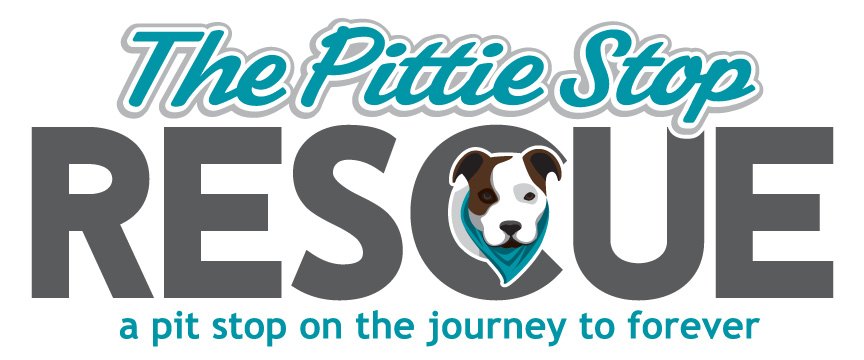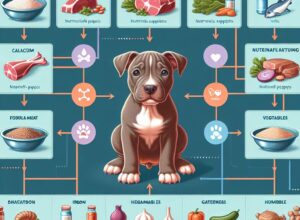
Key Takeaways: Prey Model Raw Diet for Thriving Pitbull Puppies
Before we dive into the details, let’s quickly highlight the most important points about the Prey Model Raw (PMR) diet for your pitbull puppy:
- A PMR diet is designed to mimic a dog’s natural ancestral eating habits.
- It’s rich in proteins, fats, and essential nutrients for optimal growth and health.
- Transitioning to a PMR diet should be done gradually to avoid digestive upset.
- Understanding the correct ratios of meat, bones, and organs is crucial for a balanced diet.
- Hygiene and proper food handling are paramount to keep your puppy safe.
Fueling Growth: The Basics of PMR Diet for Pitbull Puppies
Pitbull puppies are bundles of energy, and their diet is the fuel that powers their growth and development. A Prey Model Raw diet can be a great way to provide that fuel, but it’s essential to understand the basics before you get started.
What Is the Prey Model Raw (PMR) Diet?
The PMR diet is a way of feeding dogs that aims to replicate what their ancestors would have eaten in the wild. This means a diet consisting of raw meat, bones, and organs, without any grains, fruits, or vegetables. It’s all about keeping it as natural as possible, which can lead to a host of health benefits for your growing pitbull puppy.
Beneficial Nutrients in PMR Diet
When you feed your pitbull puppy a PMR diet, you’re giving them a nutrient-rich feast. This includes:
- Proteins: Essential for muscle growth and repair, and overall health.
- Fats: A concentrated energy source that also aids in nutrient absorption.
- Vitamins and Minerals: Found in organs and bones, they’re crucial for development and disease prevention.
- Enzymes and Probiotics: Naturally occurring in raw foods, they support digestion and immune health.
Transitioning Your Pitbull Puppy to a Raw Diet
Switching your puppy’s diet is a big step and it’s important to do it right. A sudden change can lead to an upset stomach, so a gradual transition is the way to go. This helps your puppy’s digestive system adjust without causing unnecessary stress.
Step-by-Step Guide to Introduce PMR Diet
Starting a PMR diet is more than just swapping out kibble for raw meat. Here’s a simple guide to make the switch smooth and safe:
- Consult with a Vet: Before making any diet changes, talk to your vet to ensure it’s the right move for your puppy’s specific needs.
- Start Slow: Begin by mixing a small amount of raw food with their current diet, gradually increasing the raw portion over time.
- Monitor Your Puppy: Keep an eye on their reaction to the new diet, including their energy levels, stool consistency, and overall behavior.
- Adjust as Needed: If you notice any digestive issues, slow down the transition process or consult your vet for advice.
- Embrace Variety: Once fully transitioned, rotate through different proteins and organ meats to provide a well-rounded nutrient profile.
Remember, every puppy is different, so what works for one may not work for another. Pay close attention to your pitbull’s individual needs and responses throughout the transition process.
Signs of Proper Digestion and Health
How do you know if your pitbull puppy is thriving on a PMR diet? Look for these clear signs:
- Energetic Behavior: A healthy pup is playful and curious.
- Firm, Small Stools: This indicates good digestion and nutrient absorption.
- Healthy Weight: Puppies should be neither too thin nor overweight.
- Shiny Coat: A glossy coat is a sign of good nutrition.
- Bright Eyes: Clear, alert eyes reflect overall well-being.
If you notice any negative changes, such as diarrhea, vomiting, or lethargy, revisit their diet with your vet. These could be signs that your puppy isn’t digesting the raw food well or that their meals aren’t properly balanced.
Navigating Nutritional Needs: PMR Diet Ratios and Ingredients
Getting the PMR diet right is all about balance. The right mix of meat, bones, and organs will ensure your pitbull puppy gets all the nutrients they need to grow strong and healthy.
The Ideal PMR Diet Composition for Puppies
For a balanced PMR diet, aim for the following ratios:
- Muscle Meat: About 70% of the diet, providing protein and fat.
- Bones: Roughly 10%, supplying calcium and other minerals.
- Organs: Close to 10% liver plus 10% other organs, rich in essential nutrients.
These ratios aren’t set in stone, and some adjustments might be necessary depending on your puppy’s individual needs. Always observe your puppy and adjust portions as needed for optimal health.
Selecting High-Quality Protein Sources
Protein is the cornerstone of a PMR diet. When selecting meat for your pitbull puppy, consider the following:
- Variety: Rotate between beef, chicken, lamb, and other meats to provide a range of nutrients.
- Quality: Choose human-grade meats whenever possible to avoid the risk of pathogens.
- Whole Prey: Feeding whole prey when possible offers the most natural nutrient profile, including muscle meat, bones, and organs.
Remember, the fresher the meat, the better. Avoid meats that have been heavily processed or that contain added hormones and preservatives.
Incorporating Essential Fats
Fats are as vital as proteins in your puppy’s diet. They’re a dense energy source and help with the absorption of fat-soluble vitamins. To ensure your puppy gets enough, include:
- Animal Fats: Found naturally in the meats you’re feeding.
- Fish: A great source of omega-3 fatty acids, which support brain development and reduce inflammation.
- Supplements: In some cases, adding a fish oil supplement can be beneficial, especially if your puppy doesn’t get much fish in their diet.
Balance is key with fats, as too much can lead to obesity, while too little can cause deficiencies. Watch your puppy’s weight and adjust fat intake accordingly.
Addressing Common Pitfalls and Misconceptions
While a PMR diet can be incredibly beneficial for your pitbull puppy, there are some common pitfalls and misconceptions to be aware of:
- Not All Raw Diets Are Equal: A PMR diet is specific in its exclusion of plant matter, which isn’t suitable for all dogs.
- Balance Over Time: It’s not necessary for every meal to be perfectly balanced, but nutrients should be balanced over the course of a week.
- Hygiene Matters: Raw diets require careful handling to prevent bacterial contamination.
- Supplementation May Be Necessary: Some puppies might need additional supplements to meet all their nutritional needs.
- Not a Cure-All: While a PMR diet has many health benefits, it’s not a substitute for veterinary care when your puppy is sick.
By understanding these points and taking a thoughtful approach to your puppy’s diet, you’ll be setting them up for a lifetime of health and happiness.
Myth vs. Reality: The Raw Diet Debate
When it comes to raw diets for puppies, everyone seems to have an opinion. Let’s clear up some common myths:
- Myth: Raw diets are unnatural for domestic dogs. Reality: PMR diets are natural for dogs.
- Myth: Raw diets are too risky due to bacteria. Reality: With proper hygiene and sourcing, the risk is minimal.
- Myth: Raw diets lead to aggressive behavior. Reality: There’s no scientific evidence to support this claim.
- Myth: Dogs can’t digest raw bones. Reality: Raw bones are generally safe and digestible; cooked bones are the real hazard.
- Myth: PMR is too complicated to get right. Reality: With guidance and careful planning, anyone can manage a PMR diet.
Understanding the truth behind these myths will help you make informed decisions about your pitbull puppy’s diet.
Ensuring Complete and Balanced Nutrition
Providing a complete and balanced diet is crucial for your puppy’s health. Here’s how to ensure your PMR diet meets all nutritional needs:
- Variety: Rotate between different meats and organs to cover a broad spectrum of nutrients.
- Quality: Source high-quality, fresh ingredients to avoid deficiencies and contaminants.
- Supplements: Consult with a vet about adding supplements like omega-3 oils, vitamin E, and others as needed.
- Monitor Health: Regular vet check-ups can catch any nutritional gaps before they become problems.
- Educate Yourself: Learn about canine nutrition to make the best choices for your puppy’s diet.
Remember, balance is achieved over time, so don’t stress over every single meal—focus on the bigger picture.
Safety First: Raw Diet Hygiene and Handling
Hygiene is paramount when handling raw food to prevent the spread of bacteria like Salmonella and E. coli. Here’s how to keep things safe:
Best Practices for Preparing Raw Meals
When preparing raw meals for your pitbull puppy, follow these best practices:
- Wash Your Hands: Always before and after handling raw food.
- Clean Surfaces: Disinfect countertops, cutting boards, and utensils immediately after use.
- Separate Raw Food: Keep raw meat away from other foods to avoid cross-contamination.
- Thaw Safely: Thaw frozen raw food in the fridge or cold water, never on the counter.
Being diligent about cleanliness will protect both you and your puppy from potential health risks.
Storing Raw Food to Prevent Contamination
Proper storage is just as important as proper preparation. Here’s what to keep in mind:
- Refrigerate Promptly: Store raw food in the fridge if it will be used within a few days.
- Freeze Extras: Freeze portions you won’t use right away to keep them fresh and safe.
- Airtight Containers: Use these to prevent leaks and odors in your fridge or freezer.
- Avoid Contamination: Keep raw food on the bottom shelf to prevent drips onto other items.
By following these storage tips, you’ll minimize the risk of bacterial growth and contamination.

Monitoring Your Puppy’s Progress on a PMR Diet
As your pitbull puppy adapts to a PMR diet, it’s important to monitor their progress. Look for signs of good health, such as:
- Steady Growth: Your puppy should be growing at a healthy, consistent rate.
- Energy Levels: A well-fed puppy will be active and eager to play.
- Coat Quality: A shiny, smooth coat is a sign of good nutrition.
- Digestive Health: Regular, firm stools indicate a diet that agrees with your puppy.
If you notice any concerning changes, don’t hesitate to adjust the diet or consult with a vet. Your puppy’s health and happiness are the top priorities.
Identifying Allergies and Food Sensitivities
Just like people, puppies can have allergies and food sensitivities. It’s important to keep an eye out for symptoms that could indicate an issue. These can include itchy skin, ear infections, or gastrointestinal problems like diarrhea or vomiting. If you suspect your pitbull puppy might be reacting to something in their PMR diet, here’s what to do:
- Keep a Food Diary: Note everything your puppy eats and any reactions they have.
- Elimination Diet: Remove one food at a time to see if symptoms improve, starting with the most common allergens.
- Slow Reintroduction: Once symptoms clear, reintroduce foods one at a time to pinpoint the problem.
- Seek Professional Advice: A vet or a pet nutritionist can offer guidance and perform tests if needed.
Identifying and managing food allergies early can help ensure your puppy leads a comfortable and happy life.
Adjusting the Diet for Optimal Growth and Development
As your pitbull puppy grows, their nutritional needs will change. It’s essential to adjust their PMR diet accordingly to support their development. Pay attention to their body condition and growth rate. If your puppy seems too thin or isn’t growing as they should, they may need more calories or a different balance of nutrients. Conversely, if they’re gaining too much weight, you might need to cut back slightly. Here’s how to keep their diet on track:
- Regular Weigh-Ins: Keep track of your puppy’s weight to ensure they’re on the right growth curve.
- Portion Adjustments: Increase or decrease food amounts based on activity level and growth.
- Consult Growth Charts: Use breed-specific growth charts as a guideline for what to expect.
- Balance Exercise and Diet: Ensure your puppy gets the right amount of exercise to complement their diet.
Remember, every puppy is unique, so tailor your approach to your pitbull’s individual needs.
Your Pitbull Puppy’s Health: When to Consult a Vet or Nutritionist
While a PMR diet can be incredibly healthy for your pitbull puppy, it’s not a one-size-fits-all solution. There are times when professional advice is crucial to your puppy’s well-being.
Understanding When to Seek Professional Advice
Here are some situations when it’s best to consult a vet or a certified pet nutritionist:
- Before Starting a PMR Diet: To ensure it’s appropriate for your puppy’s health status and breed.
- If Your Puppy Isn’t Thriving: Lack of growth, poor coat quality, or lethargy are signs something might be off.
- When Introducing New Foods: To avoid potential allergic reactions or digestive issues.
- If Considering Supplements: To determine what supplements are needed and in what dosage.
- For Regular Check-Ups: To monitor your puppy’s health and make diet adjustments as needed.
Don’t hesitate to reach out for help—these professionals can be invaluable resources in maintaining your puppy’s health.
Resources for Further Learning on PMR Diets
Want to learn more about PMR diets for pitbull puppies? There are plenty of resources available to deepen your understanding and ensure you’re providing the best for your furry friend. Consider the following:
- Books: Look for books written by veterinarians or pet nutrition experts on raw feeding.
- Online Forums: Join communities of raw feeders where you can ask questions and share experiences.
- Research Studies: Read up on the latest scientific research regarding raw diets for dogs.
- Professional Consultations: A session with a pet nutritionist can provide personalized advice.
- Workshops: Attend workshops or seminars on raw feeding to gain hands-on experience.
By using these resources, you’ll be well-equipped to make informed decisions about your pitbull puppy’s diet.
Frequently Asked Questions (FAQ)
Got questions about the PMR diet for your pitbull puppy? You’re not alone. Here are answers to some of the most common queries:
What age can pitbull puppies start a PMR diet?
Pitbull puppies can typically start a PMR diet at around 8 weeks old, once they’re weaned off their mother’s milk. However, it’s essential to introduce raw food gradually and ensure it’s finely ground to prevent choking.
How much raw food should I feed my pitbull puppy?
The amount of raw food you should feed your pitbull puppy will vary based on their age, weight, and activity level. A general guideline is to feed 2-3% of their expected adult body weight, spread across multiple meals per day.
Can a PMR diet reduce the risk of common pitbull health issues?
While a PMR diet can contribute to overall health, it’s not a guarantee against genetic or breed-specific health issues. However, proper nutrition can support a strong immune system and help mitigate some health risks.
What are some whole prey options for a pitbull puppy’s PMR diet?
Whole prey options include small animals like quail, rabbits, and fish. These can be offered whole or ground, depending on your puppy’s size and chewing ability.
How do I balance a PMR diet with training and exercise?
Balance is key. Ensure your puppy’s diet supports their energy needs without overfeeding. High-value treats used in training should be factored into their daily food intake to prevent weight gain.
What age can pitbull puppies start a PMR diet?
Introducing your pitbull puppy to a PMR diet can start as early as 8 weeks old, which is usually when they’re ready to transition from mother’s milk to solid food. It’s a critical time for their development, so ensuring they get the right nutrients is key. Start with small, manageable portions of finely ground meats and bones, and watch how they handle it. If they’re gobbling it up and digesting it well, you’re on the right track.
How much raw food should I feed my pitbull puppy?
Feeding the right amount is as important as feeding the right food. Generally, puppies need about 2-3% of their projected adult body weight per day. But this isn’t a one-size-fits-all situation. Active puppies might need more, while more laid-back pups might need less. The best approach is to watch your puppy’s body condition and adjust as needed. If they’re looking a bit too plump, cut back a little. If they’re on the lean side, it’s okay to give them a bit more.
Can a PMR diet reduce the risk of common pitbull health issues?
A PMR diet can lay the foundation for a healthy life, potentially reducing the risk of issues like obesity, diabetes, and certain allergies. But remember, diet isn’t a magic bullet. Genetics and lifestyle also play huge roles in your pitbull’s health. While a PMR diet can support a strong immune system and promote a healthy weight, it’s crucial to maintain regular veterinary check-ups and keep an eye out for any signs of health issues.
What are some whole prey options for a pitbull puppy’s PMR diet?
Whole prey options provide a balanced meal in one package. Think small animals that your puppy can eat entirely, such as quail, rabbit, or fish. These can be served whole for an experienced chewer or ground up for those just starting out. Whole prey includes muscle meat, bones, organs, and sometimes fur or feathers, all of which contribute to your puppy’s nutritional needs.
In conclusion, feeding your pitbull puppy a Prey Model Raw diet can be a rewarding journey that supports their growth and health. It’s a path that requires commitment, observation, and sometimes a bit of trial and error. But with the right approach, you can provide your puppy with a diet that’s as close to nature as possible, setting them up for a vibrant and vigorous life. Remember to always consult with your vet, especially when making significant changes to your puppy’s diet, and never be afraid to ask for advice. Your pitbull puppy depends on you for their well-being, and with a PMR diet, you have the opportunity to build a strong foundation for a lifetime of health and happiness.



